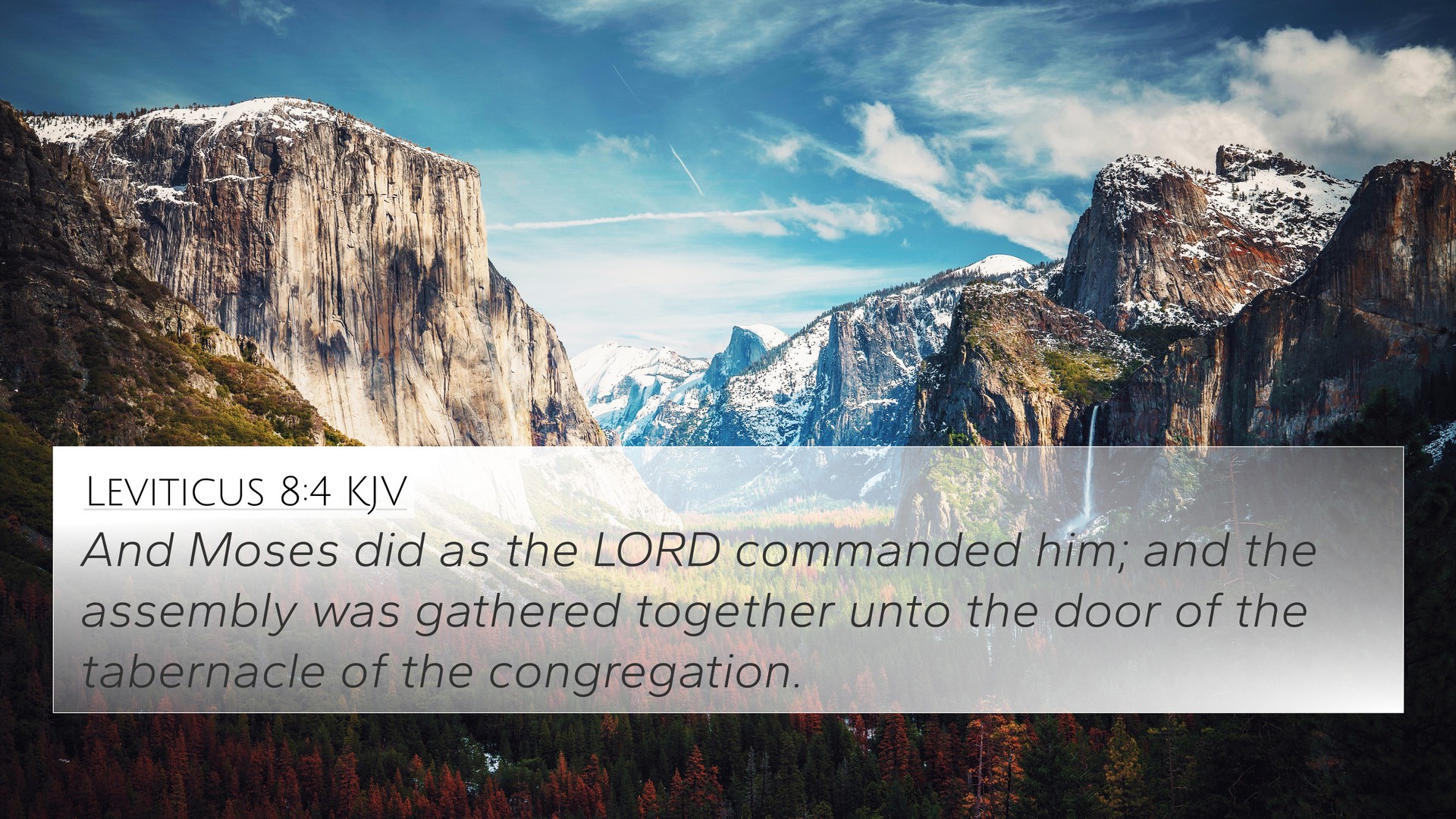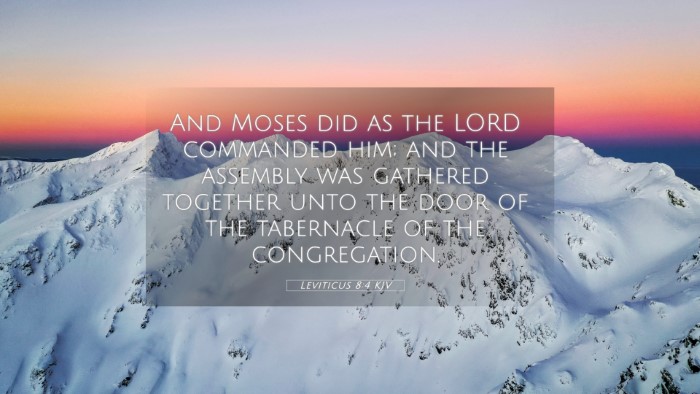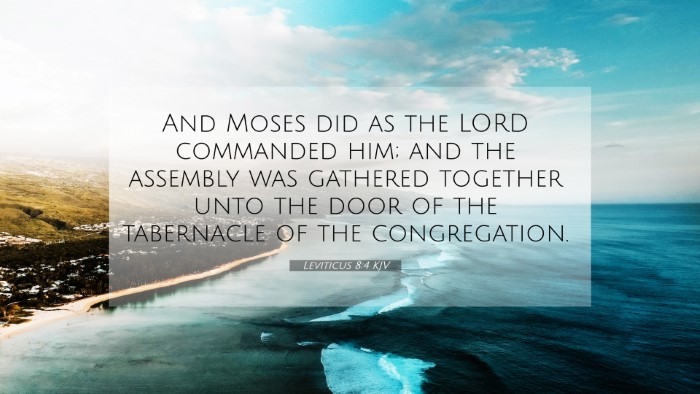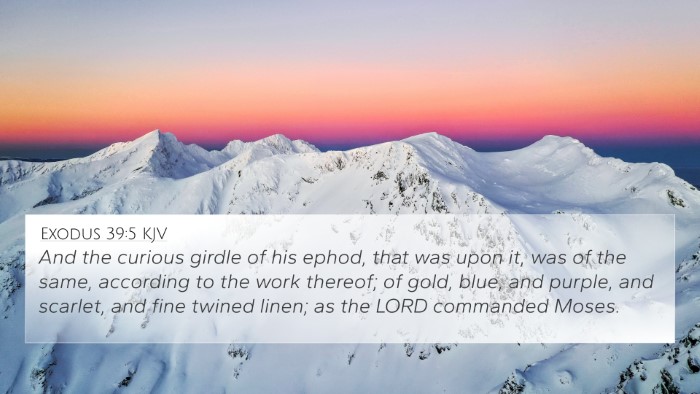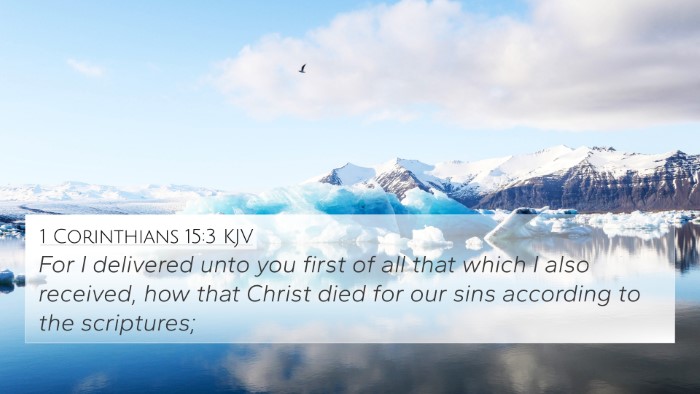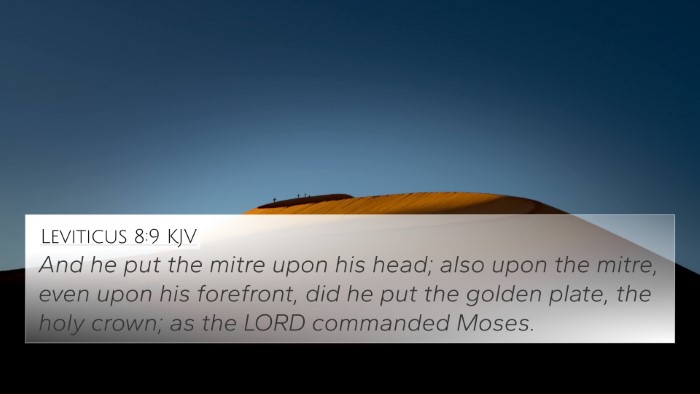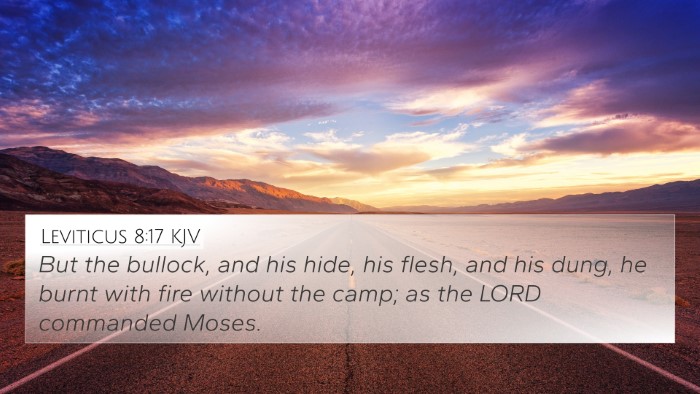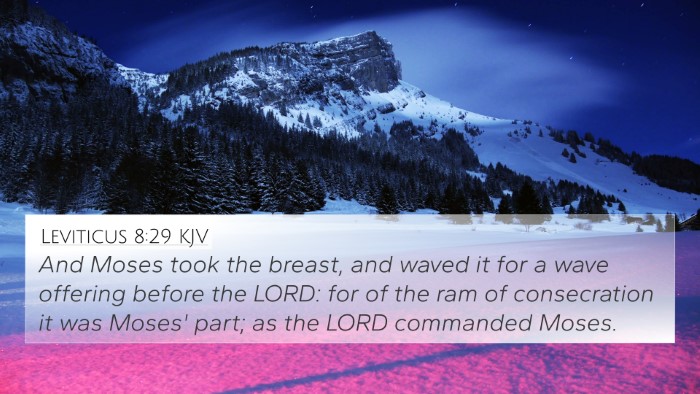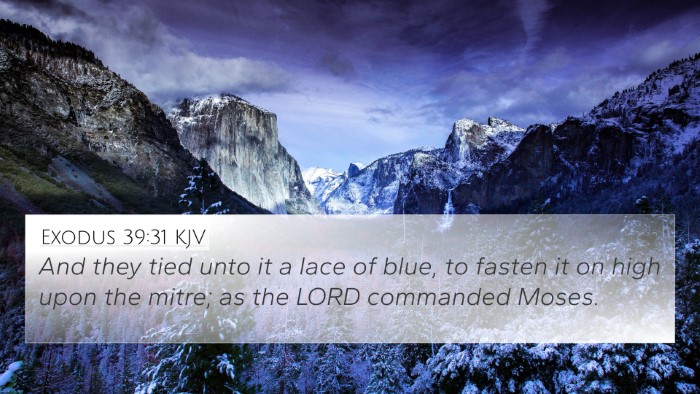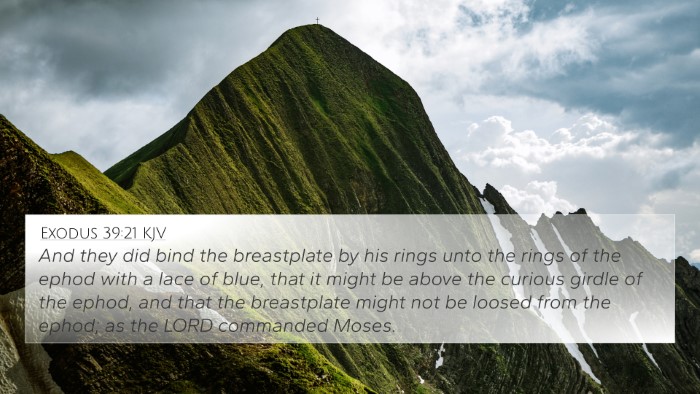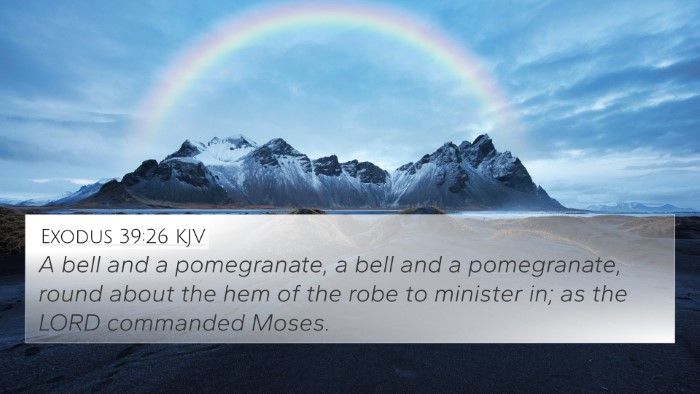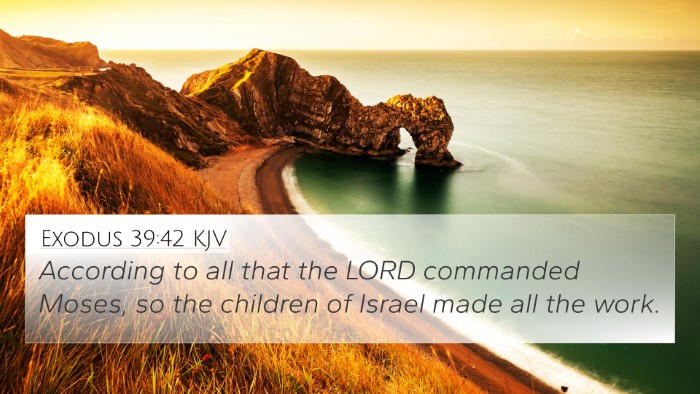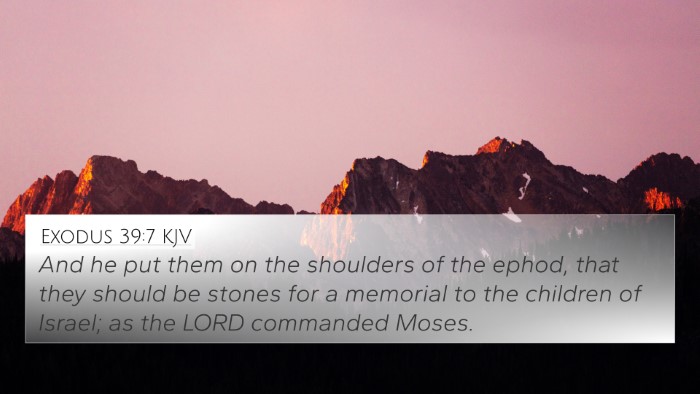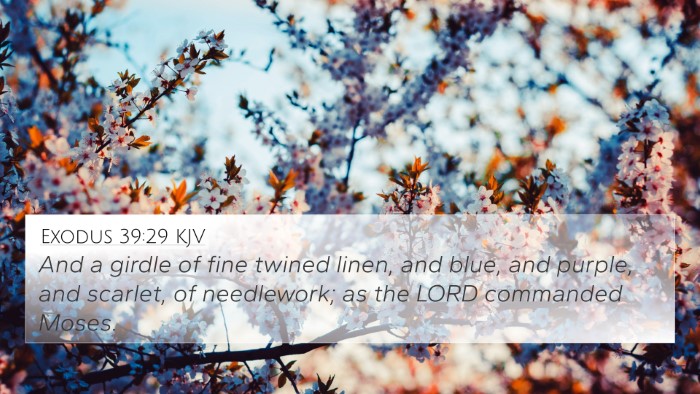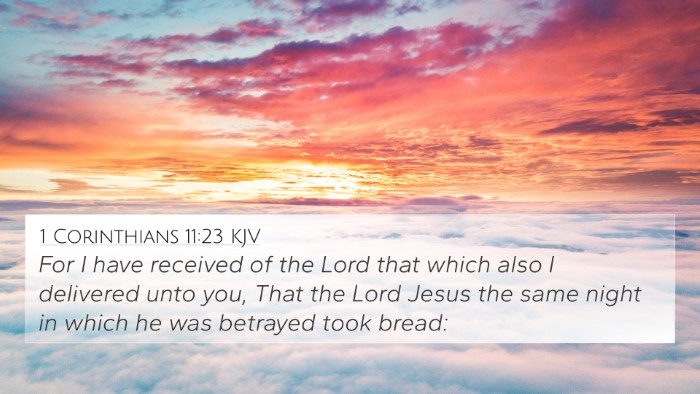Understanding Leviticus 8:4
Leviticus 8:4 states: "And Moses did as the LORD commanded him; and the assembly was gathered together unto the door of the tabernacle of the congregation." This verse marks a significant event in the consecration of the priests, showcasing Moses' obedience and the establishment of sacred practices.
Commentary Insights
This verse provides a glimpse into the important process of ordaining Aaron and his sons as priests. Public domain commentaries such as those by Matthew Henry, Adam Clarke, and Albert Barnes offer rich insights into its significance:
- Obedience to Divine Command: Moses exemplifies complete obedience to God’s directive. As Matthew Henry notes, this sets a precedent for leaders to follow divine instructions meticulously.
- Gathering of the Congregation: The assembly’s presence at the tabernacle symbolizes community involvement in the sacred rites. According to Adam Clarke, this gathering underscores the communal aspect of worship and the people’s unity in their covenant with God.
- Establishment of Priestly Ministry: Barnes highlights that this event marks the official inauguration of the Levitical priesthood, which plays a foundational role in Israel’s religious practices.
- Symbolism of the Tabernacle: The tabernacle represents God’s dwelling among His people. Clarke emphasizes its significance in the sacrificial system and worship.
- Importance of Rituals: Henry notes that rituals such as these serve to solidify the relationship between God and Israel, reinforcing the need for both divine and human elements in worship.
Cross-References
Leviticus 8:4 relates closely to various other scriptures, illustrating thematic connections and enhancing our understanding of Biblical narratives:
- Exodus 40:1-15: God's instructions for setting up the tabernacle and consecrating the priests.
- Leviticus 10:1-3: The importance of holiness and obedience in priestly duties, further affirming the seriousness of the sacrificial system.
- Numbers 3:10: The designated roles of the Levites, reinforcing the separation of priestly duties.
- Hebrews 5:4-6: A New Testament reflection on the priesthood, linking back to the Levitical system established in Leviticus.
- 1 Peter 2:9: The New Covenant’s reference to believers as a royal priesthood, echoing the priestly function of Aaron and his sons.
- Acts 15:28-29: The communal aspect of faith practices in the early church, reflecting the gathered community’s role similar to that in Leviticus.
- Matthew 5:17: Jesus' affirmation of the Law, linking His teachings to the Old Testament practices, including priestly roles.
Thematic Analysis
The themes in Leviticus 8:4 resonate throughout the Bible, establishing a dialogic connection between the Old and New Testaments.
- Obedience and Authority: This theme is prominent in many scripture passages, highlighting the importance of recognizing God's authority in religious practices.
- Community and Worship: The act of gathering signifies the importance of a collective worship experience, seen extensively through both the Old and New Testaments.
- Consecration: The calling and setting apart of individuals for holy purposes is a recurrent theme, seen in both Levitical law and the practices of the early church.
Practical Applications
The insights from Leviticus 8:4 guide contemporary believers in understanding the seriousness of following God's commands and the communal aspect of faith:
- Understanding Obedience: Just as Moses obeyed God’s commands, believers today are encouraged to follow God’s leading in their lives.
- Emphasizing Community Worship: The importance of gathering for worship as a collective body mirrors the early assemblies at the tabernacle.
- Recognizing Sacred Responsibility: The priesthood's establishment reminds all believers of their role in the kingdom of God, signifying a form of priesthood through Christ.
Conclusion
Leviticus 8:4 serves as a profound reminder of the importance of obedience, community, and the sacred nature of worship practices within the faith. Its connections to wider biblical themes and teachings enhance our understanding of God’s covenant with His people across scripture.
By exploring these insights, individuals can engage in deeper cross-referencing Bible study, uncovering the rich connections between Bible verses that lead to a more comprehensive understanding of scriptural principles.
For those interested in exploring further, tools for Bible cross-referencing such as concordances and reference guides can delve into the vast network of bible verses that relate to each other, inviting believers to enhance their understanding of Biblical teachings.
